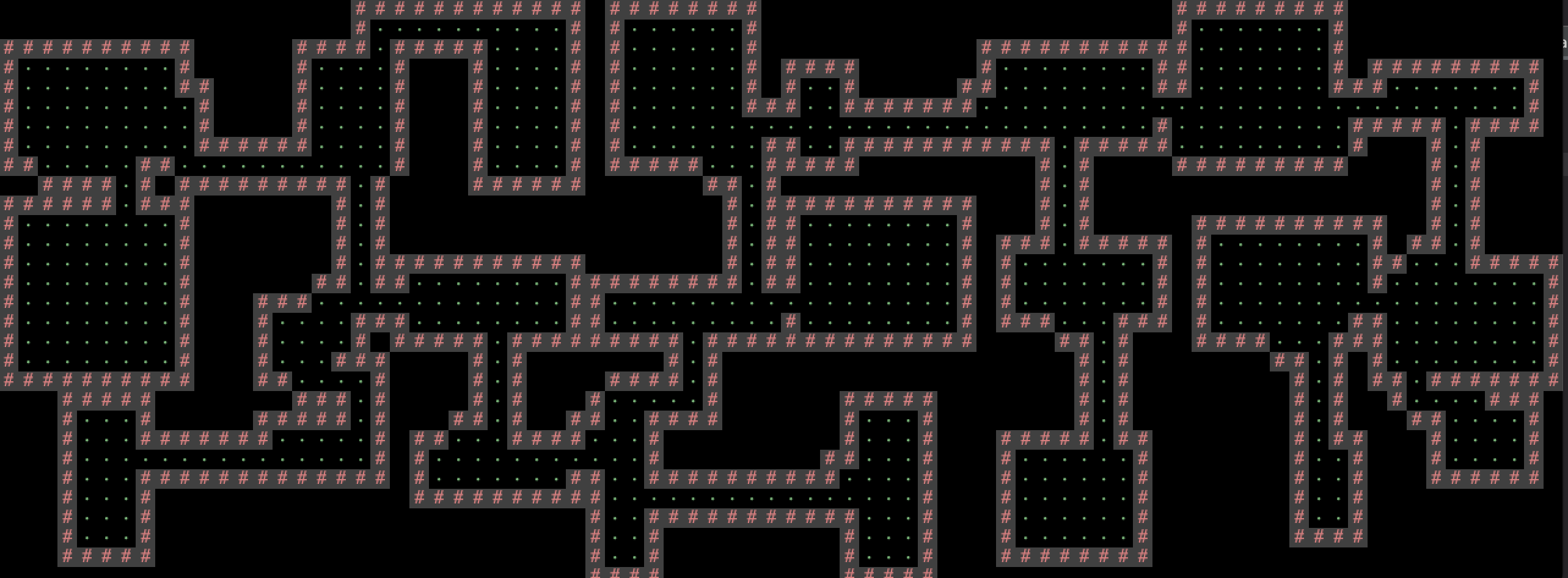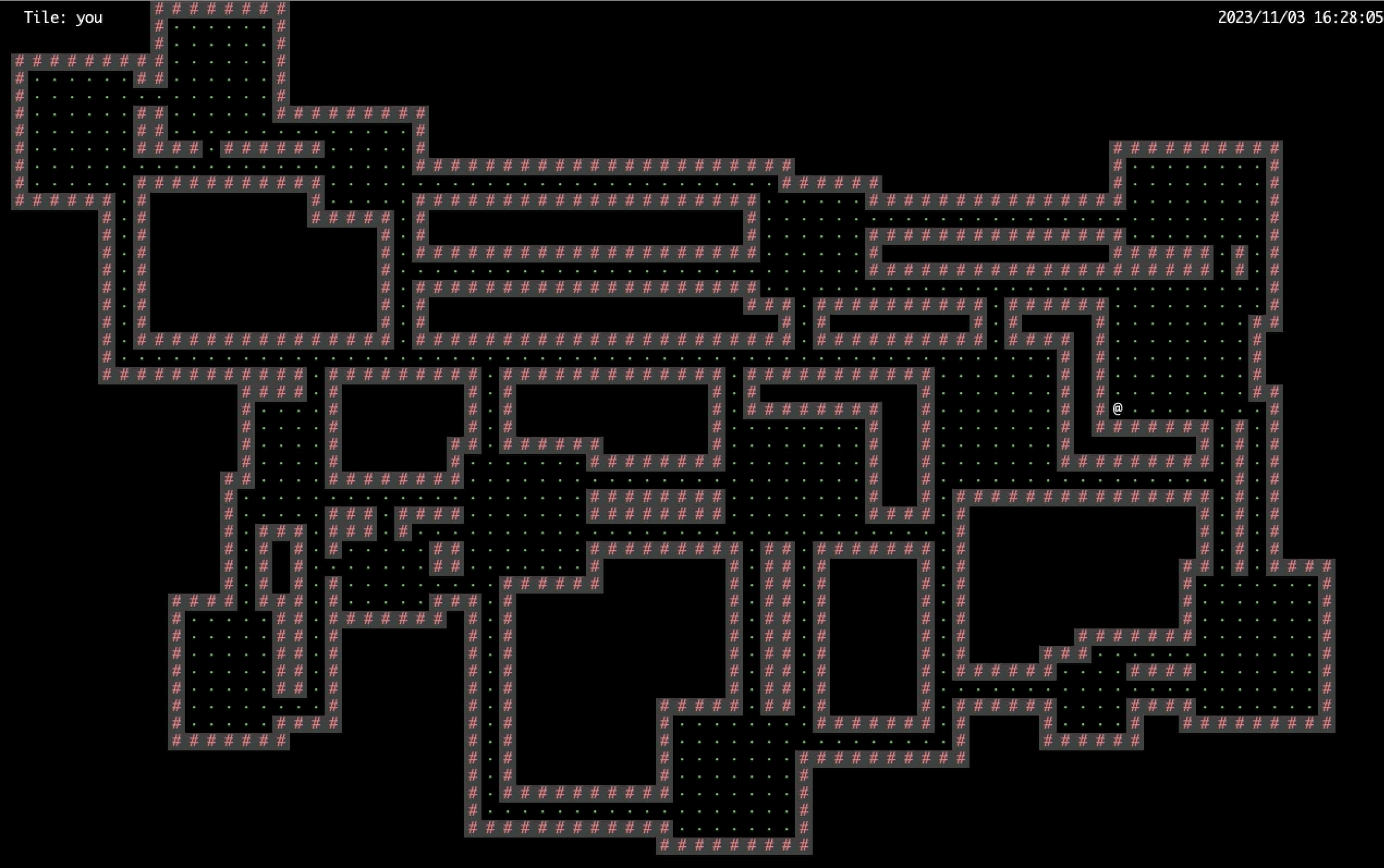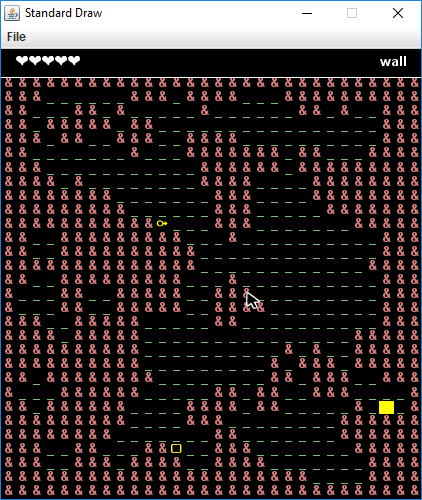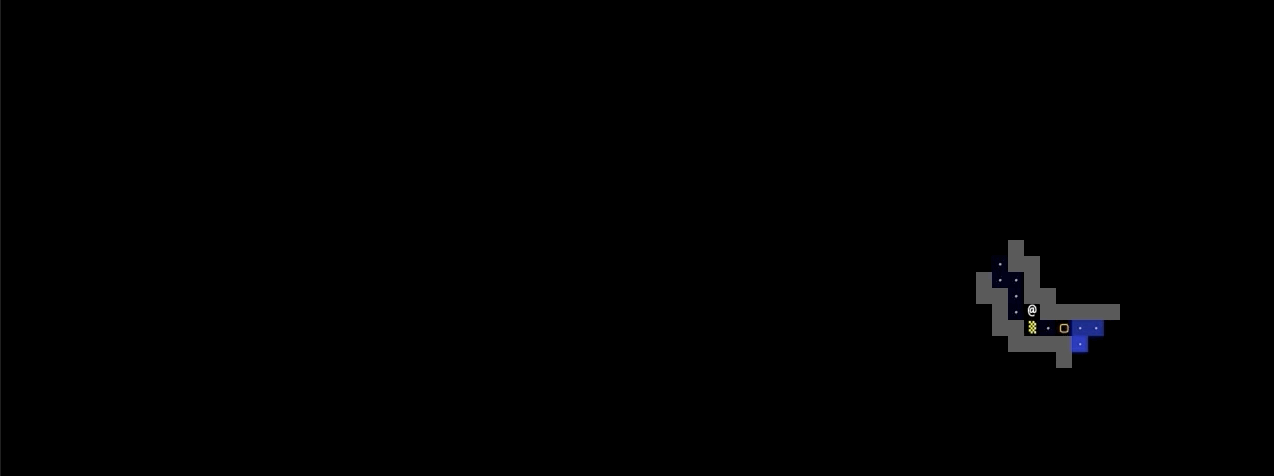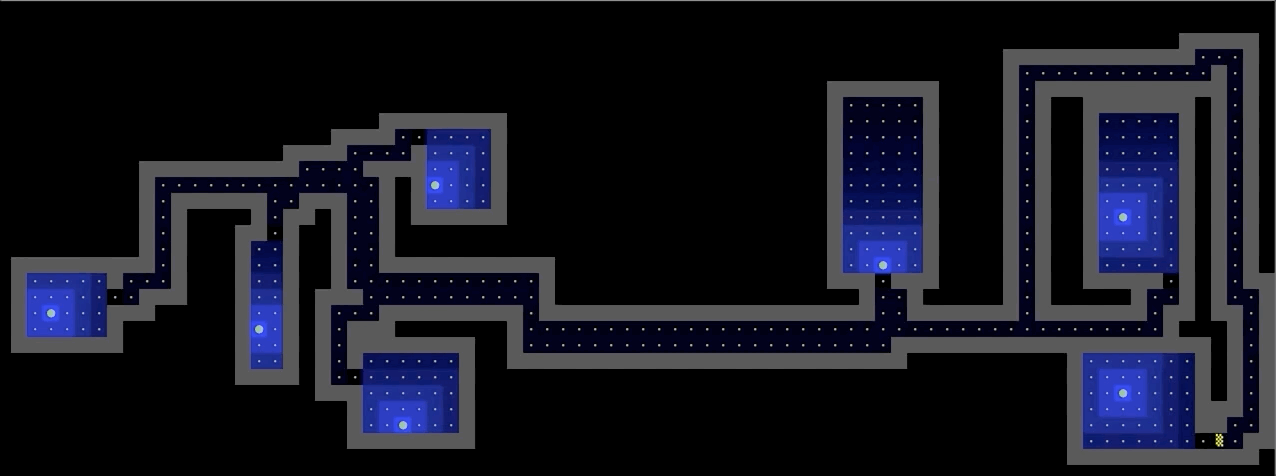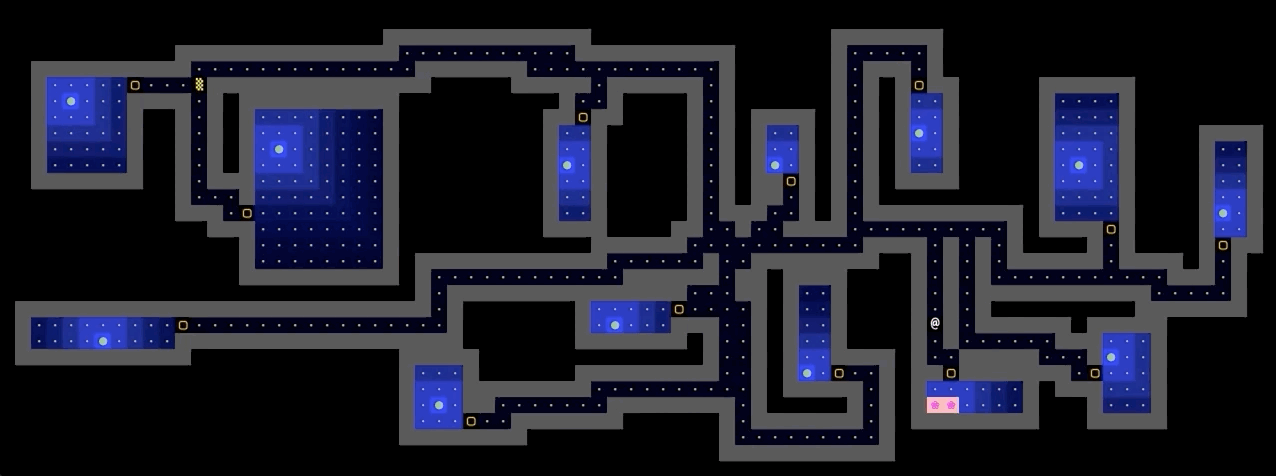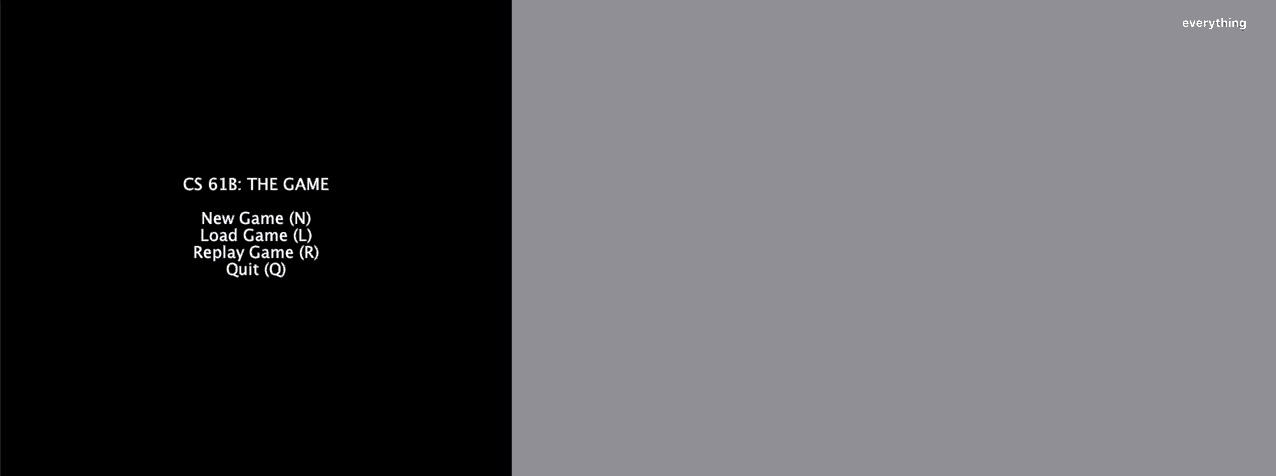FAQ #
Each assignment will have an FAQ linked at the top. You can also access it by adding “/faq” to the end of the URL. The FAQ for Project 3 is located here.
Introduction #
In Project 3, you will create an engine for generating explorable worlds. This is a large design project that will require you and one partner to work through every stage of development from ideation to presentation. The goal of this project is to teach you how to handle a larger piece of code with little starter code in the hopes of emulating something like a product development cycle. In accordance with this, the grading of this project will be different from other projects. Since there is no notion of “the correct answer” when it comes to world design and implementation, you will be assessed much like a performance review you might receive at an internship or job in addition to a very general autograder. While this means you will be graded slightly subjectively, we promise to be pretty nice bosses and will respect you as any boss should respect their hardworking employees. Please talk to us if you feel the grading scheme feels unfair.
This project will require you a great deal of exploration and experimentation. Searching the web for answers (not solutions from past semesters) should be a regular activity throughout this process. Please know that there are no right and wrong answers, as this is a very open-ended project. However, there are some implementations and ideas that are better than others. It is ok and expected that you will go through several iterations before settling on something that you deem good. That is, this project is about software engineering.
You’re not required to use any of the fancy data structures or concepts from class (A*, MSTs, Disjoint Sets, etc.). This project is about software engineering, not about data structures or algorithms. The data structures and algorithms we’ve learned about in class will make your code significantly simpler and more efficient, but please don’t use things just because we learned about them in class. Only use these tools if you feel comfortable using them in your implementation.
A video playlist (from Spring 2018) discussing tips for working on this project can be found at this link. A walkthrough of the new skeleton code is also available here.
Please also note that since the structure of the project has been changed, Phase 1 will refer to part 3A of the project.
There are several key deadlines for this assignment:
- Team formation: You must submit the Project 3 Partnerships Form by Friday, November 3rd at 4:59 PM. You will not be able to change your partner later. Read and understand the partnership guidelines before starting the assignment.
- Project 3A - World Generation: Due on Gradescope by 11/13 at 11:59 PM.
- Project 3B - Interactivity: Due on Gradescope by 11/27 at 11:59 PM.
- Project 3C - Ambition & Demos: Due at Ambition Checkoff Form by 11/27 at 11:59 PM. Demos will be in lab in that week of.
Although, Project 3B & 3C are due same day, since you need to be manually checked off for “Ambition” part, we made a division between “Interactivity” and “Ambition & Demos”. Once you submit to Gradescope for 3B, your code should also have “Ambition” features because we will be asking your Gradescope submission ID from 3B in 3C Form.
You cannot submit Project 3B & 3C late, as it will be graded during a lab checkoff with a TA. While in theory you could submit 3A and the supporting labs (Lab 11 and Lab 12) late, Project 3B & 3C builds upon these assignments, so it is unlikely that you will be able to submit these assignments late and still complete Project 3B on time.
For convenience, here are the form links for this project:
- Partnerships Form
- Project 3A Reflection
- Project 3A Checkoff
- Project 3B & 3C Reflection
- Project 3C Checkoff
Now on to the assignment spec!
Overview #
Your task for the next few weeks is to design and implement a 2D tile-based world exploration engine. By “tile-based”, we mean the worlds you generate will consist of a 2D grid of tiles. By “world exploration engine” we mean that your software will build a world, which the user will be able to explore by walking around and interacting with objects in that world. Your world will have an overhead perspective. As an example of a much more sophisticated system than you will build, the NES game “Zelda II” is (sometimes) a tile based world exploration engine that happens to be a video game:

The system you build can either use graphical tiles (as shown above), or it can use text based tiles, like the game shown below:
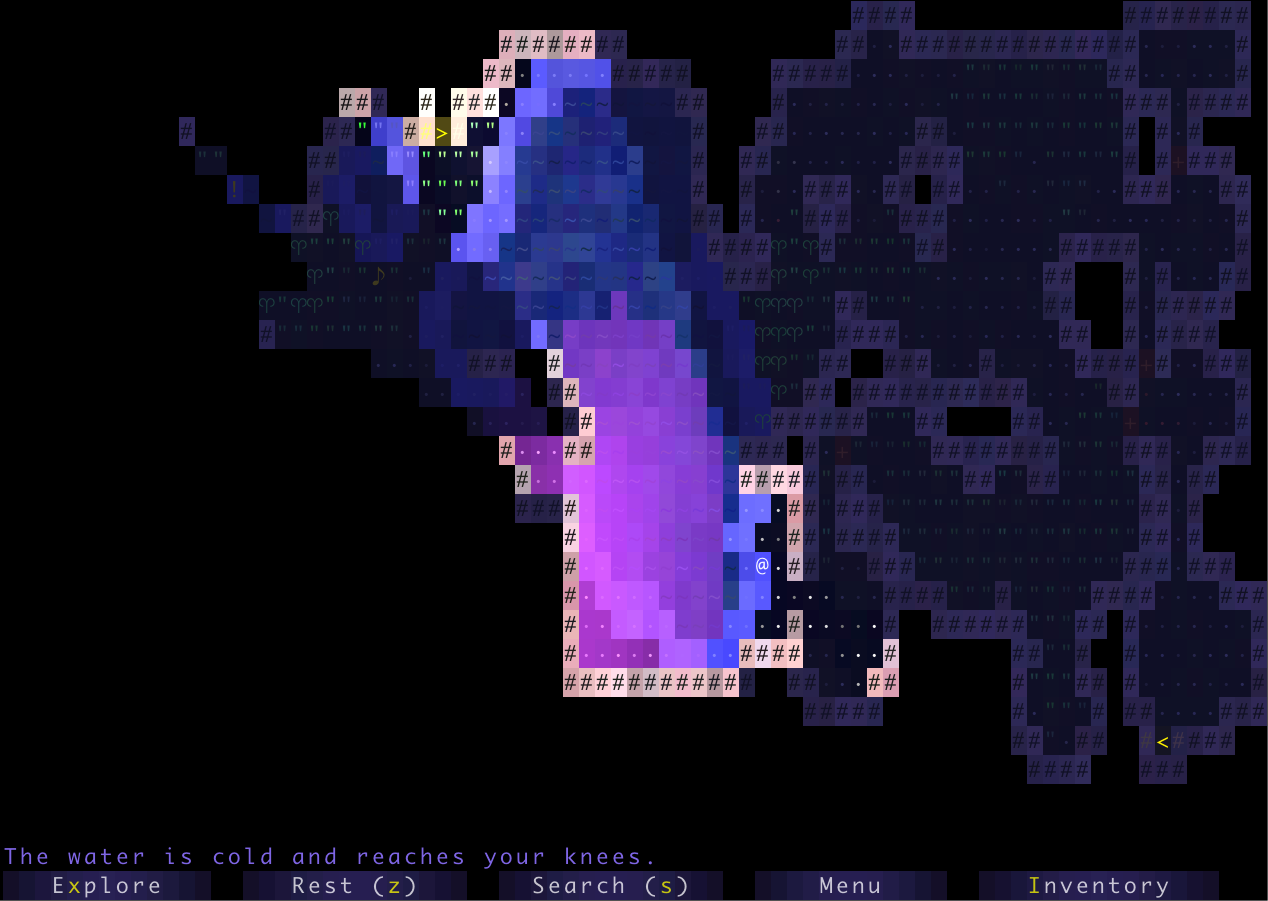
We will provide a tile renderer, a small set of starter tiles, and the headers for a few required methods that must be implemented for your world engine and that will be used by the autograder. The project will have two major deadlines. By the first deadline, you should be able to generate random worlds that meet the criteria below. By the second deadline, a user should be able to explore and interact with the world.
The major goal of this project is to give you a chance to attempt to manage the complexity that comes with building a large system. Be warned: The system you build probably isn’t going to be that fun for users! Three weeks is simply not enough time, particularly for novice programmers. However, we do hope you will find it to be a fulfilling project, and the worlds you generate might even be beautiful.
Project Setup #
THE SETUP FOR THIS PROJECT IS DIFFERENT THAN THE OTHER LABS / PROJECTS. PLEASE DO NOT SKIP THIS STEP!
Group Repository Setup #
You’ll be working exclusively in a group repository for this portion of the project. To set this group repo up on your local computer, follow the instructions below (these are also in the spec):
- Go to your email and accept the GitHub repo invite that you should have received.
- Log in to Beacon, and click on the “Groups” tab. You should have a group listed here.
- Click the “View Repository on GitHub” link.
- You’ll now be taken to your new repository on GitHub. You will have an empty repository. Copy the clone link shown in the text bar (blacked out in the screenshot).

- Open a new Terminal window, and navigate to the directory that you store your CS 61B files in (usually, students have a directory called
cs61b).
IMPORTANT: Do not cd into your fa23-s**** repo! You should not be cloning the group repo inside of your personal 61b one.
- Type the following commands into your terminal, and hit Enter after each one:
git clone <paste your link from GitHub here>
cd fa23-proj3-g*** // Replace the *** here with your group repo number
git remote add skeleton https://github.com/Berkeley-CS61B/proj3-skeleton-fa23.git
git pull skeleton main --allow-unrelated-histories
Once you’ve completed the above steps, you should see your new group repo called fa23-proj3-g*** in your local files, and if you open this repo, you’ll see the proj3 skeleton folder. From here, you and your partner can proceed as normal, by adding, committing, pushing, and pulling from this repo as you would otherwise.
Skeleton Code #
Use git pull skeleton main in your group repo to pull the skeleton code. The skeleton code
contains two key packages that you’ll be using: TileEngine, Core and Utils. TileEngine provides some basic methods for rendering, as well
as basic code structure for tiles, and contains:
TERenderer.java- contains rendering-related methods.TETile.java- the type used for representing tiles in the world.Tileset.java- a library of provided tiles.
IMPORTANT NOTE: Do NOT change TETile.java’s character field or character() method as it may lead to bad autograder
results.
The other package Core contains everything unrelated to tiles. We recommend that you put all of your code for
this project in the Core package, though this not required. The Core package comes with the following
classes:
AutograderBuddy.java- Provides two method for interacting with your system.TETile[][] getWorldFromInput(String input)simulates the game without rendering by returning the world that would result if the input string had been typed on the keyboard. You should fill this out for autograder.Main.java- How the user starts the entire system. Reads command line arguments and calls the appropriate function inWorld.java.World.java- YOUR WORLD!
This is a open ended project. As you can see, we gave you just one file called World.java where you can do necessary things to create your world! The aim of this project to give you freedom to create your own world with different desing choices. You can create any other classes if you want. Primarly, you can use World.java for the logic behind your world creation.
The last package Utils contains everything that you might need to implement your World.java class.
RandomUtils.java- Provides handful of functions that might be useful.FileUtils.java- Library of simple file operations. You can find related APIs here and here.
This project makes heavy use of StdDraw, which is a package that has basic graphics rendering capabilities.
Additionally, it supports user interaction with keyboard and mouse clicks. You will likely need to consult the API
specification for StdDraw at some points in the project, which can be
found here.
Your project should only use standard java libraries (imported from java.*) or any libraries we provided with your repo. Your final submission for 3B and 3C should not use any external libraries other than the ones provided in the skeleton.
IMPORTANT NOTE: Do NOT use static variables unless they have the final keyword! In 2018, many students ran into major
debugging issues by trying to use static variables. Static non-final variables add a huge amount of complexity to a
system. Additionally, do not call System.exit() in getWorldFromInput as this will cause the autograder to exit
and fail.
3A: World Generation #
As mentioned above, the first goal of the project will be to write a world generator. The requirements for your world are listed below:
- The world must be a 2D grid, drawn using our tile engine. The tile engine is described in lab11.
- The world must be pseudo-randomly generated. Pseudo-randomness is discussed in lab 11.
- The generated world must include distinct rooms and hallways, though it may also include outdoor spaces.
- At least some rooms should be rectangular, though you may support other shapes as well.
- Your world generator must be capable of generating hallways that include turns (or equivalently, straight hallways that intersect).
- The world should contain a random number of rooms and hallways.
- The locations of the rooms and hallways should be random.
- The width and height of rooms should be random.
- Hallways should have a width of 1 tile and a random length. Dead-end hallways are not allowed.
- Rooms and hallways must have walls that are visually distinct from floors. Walls and floors should be visually distinct from unused spaces.
- Rooms and hallways should be connected, i.e. there should not be gaps in the floor between adjacent rooms or hallways.
- All rooms should be reachable, i.e. there should be no rooms with no way to enter
- The world should be substantially different each time, i.e. you should NOT have the same basic layout with easily predictable features. FAQ will have a description of what “substantially different” means.
As an example of a world that meets all of these requirements (click for higher resolution), see the image below. In this image, # represents a wall tile, a dot represents a floor tile, and there is also one golden colored wall segment that represents a locked door. All unused spaces are left blank.
Once you’ve completed lab 11, you can start working on your world generation algorithm.
It is very likely that you will end up throwing away your first world generation algorithm. This is normal! In real world systems, it is common to build several completely new versions before getting something you’re happy with. The room generation algorithm above was my 3rd one, and was ultimately much simpler than either of my first two.
You’re welcome to search the web for cool world generation algorithms. You should not copy and paste code from existing games or graphical demos online, but you’re welcome to draw inspiration from code on the web. Make sure to cite your sources using @source tags. For inspiration, you can try playing existing 2D tile based games. Brogue is an example of a particularly elegant, beautiful game. Dwarf Fortress is an example of an incredibly byzantine, absurdly complex world generation engine.
Tileset and Tile Rendering #
The tile rendering engine we provide takes in a 2D array of TETile objects and draws it to the screen. Let’s call
this TETile[][] world for now. world[0][0] corresponds to the bottom left tile of the world. The first coordinate is
the x coordinate, e.g. world[9][0] refers to the tile 9 spaces over to the right from the bottom left tile. The second
coordinate is the y coordinate, and the value increases as we move upwards, e.g. world[0][5] is 5 tiles up from the
bottom left tile. All values should be non-null, i.e. make sure to fill them all in before calling renderFrame. Make
sure you understand the orientation of the world grid! If you’re unsure, write short sample programs that draw to the
grid to deepen your understanding. If you mix up x vs. y or up vs. down, you’re going to have an incredibly confusing
time debugging.
We have provided a small set of default tiles in Tileset.java and these should serve as a good example of how to
create TETile objects. We strongly recommend adding your own tiles as well.
The tile engine also supports graphical tiles! To use graphical tiles, simply provide the filename of the tile as the
fifth argument to the TETile constructor. Images must be 16 x 16, and should ideally be in PNG format. There is a
large number of open source tile-sets available online for tile based games. Feel free to use these.
Any TETile object you create should be given a unique character that other tiles do not use. Even if you are using
your own images for rendering the tile, each TETile should still have its own character representation.
If you do not supply a filename, or the file cannot be opened, then the tile engine will use the unicode character provided instead. This means that if someone else does not have the image file locally in the same location you specified, your world will still be displayed, but using unicode characters instead of textures you chose.
The tile rendering engine relies on StdDraw. We recommend against using StdDraw commands like setXScale
or setYScale unless you really know what you’re doing, as you may considerably alter or damage the a e s t h e t i c
of the system otherwise.
Starting Your Program #
Your program will be started by running the main method of the Main class. You will see that this method will render your program and will provide interactivity for you in the future. On top of that, in order to test your world, for 3A, your project must
support getWorldFromInput. Specifically, you should be able to handle an input of the format "N#######S"
where each # is a digit and there can be an arbitrary number of #s. This corresponds to requesting a new world (N),
providing a seed (#s), and then pressing S to indicate that the seed has been completely entered. The logic between your world generation in Main class and getWorldFromInput method should be similar. While you should render your program in Main, you should not do that in getWorldFromInput since this will be used for Autograder.
Finally, we recommend that you make minimal modifications to the core.Main class. It is a much better idea to delegate
all the work of the program to other classes you will create.
When your core.Main.main() method is run, your program must display a Main Menu that provides at
LEAST the options to start a new world, load a previously saved world, and quit. The Main Menu should be fully navigable
via the keyboard, using N for “new world”, L for “load world”, and Q for quit. You may include additional options or
methods of navigation if you so choose.
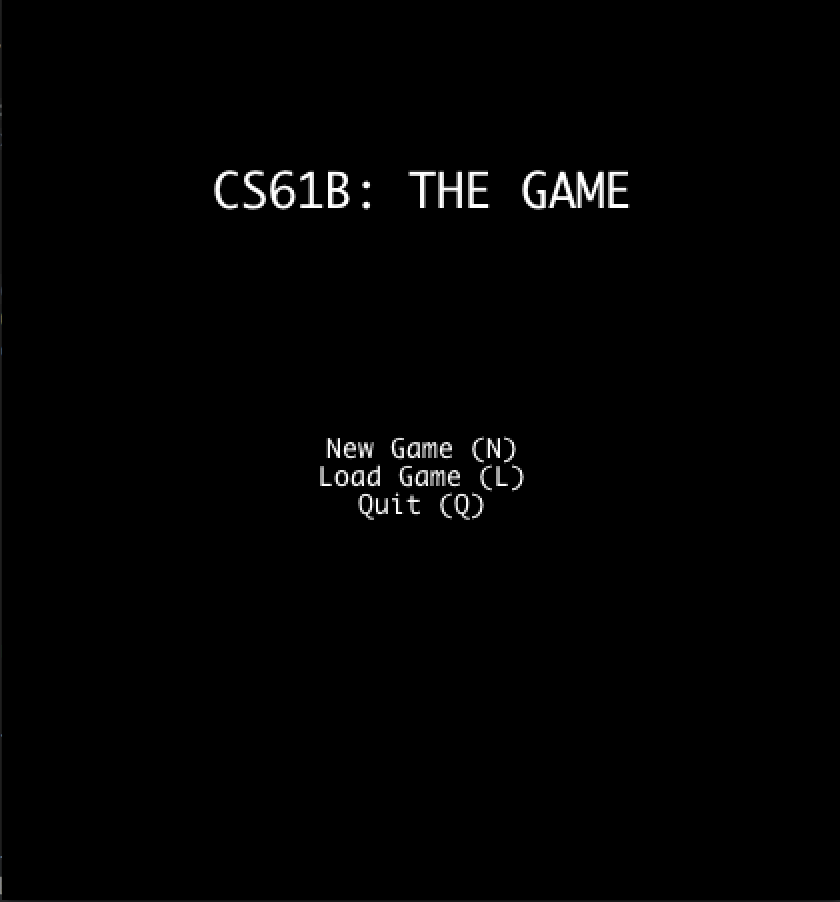
After pressing N on the keyboard for “new world”, the user should be prompted to enter a “random seed”, which is a long value of their choosing. This long data type will be used to generate the world randomly (as described later and in lab 12). The UI should show the seed value that the user has entered so far. After the user has pressed the final number in their seed, they should press S to tell the system that they’ve entered the entire seed that they want. Your world generator should be able to handle any positive seed up to 9,223,372,036,854,775,807. There is no defined behavior for seeds larger than this.
The behavior of the “Load” command is described later in this specification.
If the system is being called with core.AutograderBuddy.getWorldFromInput, no menu should be displayed and nothing
should be drawn to the screen. The system should process the given String as if a human user was pressing the
given keys using the main() method. For example, if we
call getWorldFromInput("N3412S"), your program should generate a world with seed 3412 and return the
generated 2D tile array. Note that letters in the input string can be upper or lower case and your engine should be
able to accept either keypress (i.e. “N” and “n” should both initiate the process of world generation). You should **
NOT** render any tiles or play any sound when using getWorldFromInput.
If you want to allow the user to have additional options, e.g. the ability to pick attributes of their character, specify world generation parameters, etc., you should create additional options. For example, you might add a fourth option “S” to the main menu for “select creature and create new world” if you want the user to be able to pick what sort of creature to play as. These additional options may have arbitrary behavior of your choosing, however, the behavior of N, L, and Q must be exactly as described in the spec!
Requirements #
For 3A, you should be able to run Main.main by providing an input String, and have your program create a world,
that adhere to the requirements mentioned above along with our randomness requirements mentioned in the Submission and
Grading section below. Note that you should render the world to check your code by writing your own main method, but
for the autograder, getWorldFromInput should not render the world, only returning the world as a TETile array.
Worlds should be visibly different for different seeds provided to the program.
Design Document #
Since we did not provide you with any significant skeleton code for Project 3, and since the project is very open-ended, we expect that BYOW implementations will vary a fair amount between students. We recommend that you have a design document that reflects the current state of your project.
Before you begin writing any code, use the guidelines listed here to create a plan for every feature of your BYOW program, and convince yourself that your design is correct. Writing a design document is an iterative process. After coming up with your initial design, you may find some flaws in it, requiring you to revisit your design and update its description according to your new findings.
Note: Your design document will NOT be graded.
Design Document Guidelines #
You may use the following format for your BYOW design document.
Design Document Sections #
1. Classes and Data Structures #
Include here any class definitions. For each class, list the instance variables (if any). Include a brief description of each variable and its purpose in the class.
2. Algorithms #
This is where you describe how your code works. For each class, include a high-level description of the methods in that class. That is, do not include a line-by-line breakdown of your code, but something you would write in a javadoc comment above a method, including any edge cases you are accounting for.
3. Persistence #
You should only tackle this section after you are done with 3A. This section should describe how you are going to save the state of a world, and load it again, following the requirements in the spec. Again, try to keep your explanations clear and short. Include all the components your program interacts with - classes, specific methods, and files you may create. You can check out lab 11.
3B: Interactivity #
In the second part of the project, you’ll add the ability for the user to actually interact with the world, and will also add user interface (UI) elements to your world to make it feel more immersive and informative.
The requirements for interactivity are as follows:
- The user must be able to control some sort of “avatar” that can moved around using the W, A, S, and D keys. By “avatar”, we just mean some sort of on-screen representation controlled by the user. For example, in my project, I used an “@” that could be moved around.
- The avatar must be able to interact with the world in some way.
- Your system must be deterministic in that the same sequence of key-presses from the same seed must result in exactly
the same behavior every time. Note that a
Randomobject is guaranteed to output the same random numbers every time. - In order to support saving and loading, your program will need to create some files in your
proj3directory (more details later in the spec and in the skeleton code). The only files you may create must have the suffix “.txt” (for example “save-file.txt”). You will get autograder issues if you do not do this.
Optionally, you may also include game mechanics that allow the user to win or lose. Aside from these feature requirements, there will be a few technical requirements for your system, described in more detail below.
UI (User Interface) Appearance #
After the user has entered a seed and pressed S, the world should be displayed with a user interface. The user interface of your project must include:
- A 2D grid of tiles showing the current state of the world.
- A “Heads Up Display” (HUD) that provides additional information that maybe useful to the user. At the bare minimum, this should include Text that describes the tile currently under the mouse pointer. This should not be flickering, if it flickers you won’t be able to receive credit.
As an example of the bare minimum, the simple interface below displays a grid of tiles and a HUD that displays the description of the tile under the mouse pointer (click image for higher resolution):
You may include additional features if you choose. In the example below (click image for higher resolution), as with the previous example, the mouse cursor is currently over a wall, so the HUD displays the text “wall” in the top right. However, this HUD also provides the user with 5 hearts representing the avatar’s “health”. Note that this world does not meet the requirements of the spec above, as it is a large erratic cavernous space, as opposed to rooms connected by hallways.
As an example, the game below (click image for higher resolution) uses the GUI to list additional valid key presses, and provides more verbose information when the user mouses-over a tile (“You see grass-like fungus.”). The image shown below is a professional game, so we do not expect your project to have this level of detail (but we encourage you to try for some interesting visuals).
For information about how to specify the location of the HUD, see
the initialize(int width, int height, int xOffset, int yOffset) method of TERenderer or see lab 11.
UI Behavior #
After the world has been generated, the user must be in control of some sort of avatar that is displayed in the world.
The user must be able to move up, left, down, and right using the W, A, S, and D keys, respectively. These keys may also
do additional things, e.g. pushing objects. You may include additional keys in your engine. The avatar should not move
when attempting to move into a wall and the program should not error.
The system must behave pseudo-randomly. That is, given a certain seed, the same set of key presses must yield the exact same results!
In addition to movement keys, if the user enters :Q (note the colon), the program should quit and save. The
description of the saving (and loading) function is described in the next section. This command must immediately quit
and save, and should require no further key-presses to complete, e.g. do not ask them if they are sure before quitting.
We will call this single action of quitting and saving at the same time “quit/saving”. This command is not case-sensitive,
so :q should work as well. Additionally, : followed by any other letter should not do anything.
This project uses StdDraw to handle user input. This results in a couple of important limitations:
StdDrawdoes not support key combinations. When we say:Q, we mean:followed byQ.- It can only register key presses that result in a char. This means any unicode character will be fine but keys such as the arrow keys and escape will not work.
- On some computers, it may not support holding down of keys without some significant modifications; i.e. you can’t hold
down the e key and keep moving east. If you can figure out how to support holding down of keys in a way that is
compatible with
getWorldFromInput, you’re welcome to do so.
Because of the requirement that your system must handle String input (via getWorldFromInput), your engine cannot
make use of real time, i.e. your system cannot have any mechanic which depends on a certain amount of time passing in
real life, since that would not be captured in an input string and would not lead to deterministic behavior when using
that string vs. providing input with the keyboard. Keeping track of the number of turns that have elapsed is a perfectly
reasonable mechanic, and might be an interesting thing to include in your world, e.g. maybe the world grows steadily
darker with each step. You’re welcome to include other key presses like allowing the user to press space bar in
order to wait one turn.
Saving and Loading #
Sometimes, you’ll be exploring your world, and you suddenly notice that it’s time to go to watch a CS 61B lecture. For times like these, being able to save your progress and load it later, is very handy. Your system must have the ability to save the state of the world while exploring, as well as to subsequently load the world into the exact state it was in when last saved.
Within a running Java program, we use variables to store and load values. Keep in mind that when your program ends, all the variables will go out of scope. Thus, you will need to persist the state of your program on some files that your program should create.
When the user restarts core.Main and presses L, the world should be in exactly the same state as it was before
the project was terminated. This state includes the state of the random number generator! More on this in the next
section. In the case that a user attempts to load but there is no previous save, your system should simply quit and the
UI interface should close with no errors produced.
In the base requirements, the command :Q should save and completely terminate the program. This means an input string
that contains :Q should not have any more characters after it and loading a world would require the program to be run
again with an input string starting with L.
Interacting With Input Strings #
Your getWorldFromInput(String input) must be able to handle input strings that include movement.
For example, the string N543SWWWWAA corresponds to the user creating a world with the seed 543, then moving up four
times, then left twice. If we called getWorldFromInput("N543SWWWWAA"), your system would return
a TETile[][] representing the world EXACTLY as it would be if we’d used main and typed these keys in
manually. Since the system must be deterministic given a seed and a string of inputs, this will allow users to replay
exactly what happened for a given sequence of inputs. This will also be handy for testing out your code, as well as for
our autograder.
getWorldFromInput(String s) must also be able to handle saving and loading in a replay string,
e.g. N25SDDWD:Q would correspond to starting a new world with seed 25, then moving right, right, up, right, then
quit/saving. The method would then return the 2D TETile[][] array at the time of save. If we then started the engine
with the replay string LDDDD, we’d reload the world we just saved, move right four times, then return the
2D TETile[][] array after the fourth move.
Your world should not change in any way between saves, i.e. the same exact TETile[][] should be returned by the
last call to getWorldFromInput for all the following scenarios:
getWorldFromInput(N999SDDDWWWDDD)getWorldFromInput(N999SDDD:Q), thengetWorldFromInput(LWWWDDD)getWorldFromInput(N999SDDD:Q), thengetWorldFromInput(LWWW:Q), thengetWorldFromInput(LDDD:Q)getWorldFromInput(N999SDDD:Q), thengetWorldFromInput(L:Q), thengetWorldFromInput(L:Q)thengetWorldFromInput(LWWWDDD)
we then called getWorldFromInput with input L:Q, we’d expect the exact same world state to be saved and
returned as TETile[][] as with the previous call where we provided LDDDD.
You do not need to worry about replay strings that contain multiple saves, i.e. N5SDD:QD:QDD:Q is not considered a
valid replay string, since the program should have terminated before the second :Q. You do not need to worry about
invalid replay strings, i.e. you can assume that every replay string provided by the autograder starts with either N#S
or L, where # represents the user entered seed.
The return value of the getWorldFromInput method should not depend on whether the input string ends with :Q or
not. The only difference is whether the world state is saved or not as a side effect of the method.
3C: Ambition & Demos #
28 points of your project score will be based on features of your choosing, which we call your “ambition score”. The big idea is that beyond the base requirements of this project, we want you to try to polish your product a bit more and add some cool features. Below is a list of features worth either 21 points (primary feature) or 7 points (secondary feature). From these two categories, you are required to implement at least one primary feature in order to get full credit (not implementing a secondary feature is okay). This “ambition” category is only worth 28 points. If you do, e.g., 35 points worth, you do not get extra credit. However, feel free to add as many features as you’d like if you have the time and inclination.
Your project must still meet the basic requirements described above! For example, if you allow the user to use mouse clicks, the project should still allow keyboard based movement!
Under the description of some primary features, we’ve provided some GIFS that would score full points on their respective ambition point items to help clear any confusions. Yours do not need to look exactly like the examples given.
21 Points Primary Features #
- Create a system so that the tile renderer only displays tiles on the screen that are within the line of sight of the avatar. The line of sight must be able to be toggled on and off with a keypress. (The line of sight GIF below is a more complex version that involves bending around corners; we have also seen versions where it is just a square of light around the avatar).
- Add the ability for light sources to affect how the world is rendered, with at least one light source that can be turned on and off with a keypress.
- Add entities which chase the avatar/other entities by use of a search algorithm from class, with a toggle to display their projected path.
- Create a system for “encounters”, where a new interface appears when the avatar interacts with entities in the world, returning the avatar to the original interface when the encounter ends (e.g. Pokémon).
- Add the ability for the user to “replay” their most recent save, visually displaying all the actions taken since the last time a new world was created. This must result in the same final state as would occur if the user had loaded the most recent save. This means that the game should be playable once the replay is complete.
- Add the ability for the user to change the perspective of their view (first-person, isometric 2.5D, 3D, etc.) (We’ve never seen anyone do isometric 2.5D or full 3D before! The Nintendo 64 game ‘Kirby 64 - The Crystal Shards’ is an example of what an isometric 2.5D world looks like). One particularly interesting example is Dorottya Urmossy and David Yang’s Fall 2022 submission, which is a 2.5D first-person view, i.e. the world is 3D but the entities are 2D.
7 Points Secondary Features #
- Add multiple save slots that can be accessed with a new menu option, and a new keyboard shortcut to save to a slot other than slot 1. You should be careful to still support the default behavior of saving and loading in order to be consistent with the replay string requirements.
- Add the ability to create a new world without closing and reopening the project, either as a special option you can press while exploring, or when you reach a “game over” state if you’ve turned your world into a game.
- Add a menu option to change your avatar’s appearance.
- Add a menu option to give your avatar a name which is displayed on the HUD.
- Add a menu option or randomly determine what the environment/theme of the world will be.
- Add a menu option to change all text in the interface to a different language. English should be the default and there should be a way to switch it back to English.
- Add support for mouse clicks on the main menu for anything that can be done with a keypress on the main menu.
- Make your engine render images instead of unicode characters.
- Add cool music to your menu and/or exploration interface. Also add sound effects for interactions the avatar makes with the world.
- Add a minimap somewhere which shows the entire map and the current avatar location. This feature is a lot more interesting if you also implement a map which is larger than the screen so that you are unable to see the entire map normally.
- Add ability to rotate the world, i.e. turn the board 90 degrees and adjust movement keys accordingly.
- Add a display of real date and time in the Heads-Up Display.
- Add support for movement with mouse clicks on any visible square. You’ll need to implement some sort of algorithm for pathfinding.
- Add support for 2 users to interact at the same time. This will require that you have two avatars on screen which can move around, and they should have separate control schemes.
- Add support for undoing a movement (even moves that occurred in a previous save before the current one was loaded). Undoing a movement should reset the world back to before the most recent keypress but should add to the replay string instead of removing a character (i.e. undo command should be logged in the replay string).
Requirements Summary #
Here is a list of the requirements and restrictions on your project. Please note that this section does not substitute reading the entire spec since there are a lot of details which are not captured here.
- When using
main, your program must have a menu screen that has New World (N), Load (L), and Quit (Q) options, navigable by the keyboard, which are all not case-sensitive. - When entering New World, the user should enter an integer seed followed by the S key. Upon pressing S, the world should be generated and displayed.
- The UI should show the numbers entered so far when the user is giving the seed.
- Must have pseudo-randomly generated worlds/variety in worlds, i.e. the world should be different for every seed.
- All generated worlds must include all the visual features described in 3A above.
- Users must be able to move around in the world using W, A, S, and D keys.
- Users must be able to press “:Q” to quit, and after starting the program up again, the L option on the main menu should load the world state exactly as it was before.
- All random events should be pseudorandom. That is, your program gives deterministic behavior given a seed.
- Users must be able to interact using
getWorldFromInput, and behavior other than accepting input and drawing to the screen should be identical tomain. getWorldFromInputmust return aTETile[][]array of the world at the time after the last character in the string is processed.getWorldFromInputmust be able to handle saving and loading, just likemain.- Your program must use our
TileEngineandStdDrawfor displaying graphics. - Your program must have a HUD, which displays relevant information somewhere outside the area displaying the world/tiles.
- HUD must display a description of tile upon hovering over the tile.
- Your program must not use real time. Nothing should be moving if no input is being received.
- Your program must include features that make up 28 points from the Ambition categories, with at least one primary feature.
Submission and Grading #
As usual, we’ll have a grader for this project on Gradescope. Remember to add your partner as a group member to your Gradescope submission. In addition, you’ll also submit this form when you’ve completed the project. More details in the next section about checkoffs. If you do not submit this form then you will receive a 0 on the checkoff portion of the project. Only one of your partners needs to submit this, but you should write the responses together.
Partnership Preferences Form: 2 points #
Filling out the Project 3 Partnership Preferences Form is worth 2 points for this project. You must fill out the form by Friday, November 3rd at 4:59pm to get these points.
Autograders: 12 points #
See this section for autograder details.
- 3A: 3 points
- 3B: 9 points
3A Manual Review: 6 points #
A TA will pull your code, and run your game 5 separate times with 5 separate seeds. They will then check that your 5 different worlds meet our randomness criteria defined below:
- Locations of rooms should be in different places each time.
- Sizes of rooms should be different each time.
- The number of rooms and hallways should be different each time.
- The world should be substantially different each time, i.e. you should not have the same basic layout with easily predictable features.
If you have questions or concerns about whether your world matches these criteria, you may ask a TA in Office Hours to confirm.
In order to get credit for the 3A Checkoff, you must fill out this form by Monday, November 13th at 11:59PM.
Partner Reflection: 20 points #
- 3A Reflection Form: 10 points (due November 13th at 11:59PM)
- 3B & 3C Reflection Form: 10 points (due November 27th at 11:59PM)
3C Checkoff Demo: 85 points #
To get credit for the checkoff demo, you must submit this form.
- 57 points: Obeying base spec for 3A and 3B.
- 28 points: Ambition points.
You’ll also need identify a commit so we can grade it. You should:
- Identify the SHA of the commit that you’d like us to grade for the demo.
This SHA must be from the same as the commit you submitted to Gradescope. It’s OK if they’re not exactly the
same, though we recommend using the same commit so that you’re sure that it compiles and runs the way you expect it
to. But if you need to comment some lines out to pass the autograder and then uncomment them for the checkoff, that’s
OK. You can use
git logto help you here. Copy this SHA and save it somewhere. - Ensure that this commit is before the deadline, and run your code from this commit to double-check that it is indeed the commit you’d like graded. If your commit was from after the deadline, you’ll receive a 50% penalty.
- Paste it carefully into the form submission.
- Do not ignore step 3. If you paste the incorrect SHA, we’ll grade an incorrect version of your code, and if you
paste an invalid SHA we’ll by default grade the
origin/HEADcommit (which is likely to incur lateness penalties).
Checkoff Script and Form #
In the hopes of keeping this process as transparent as possible, click here for the exact script the instructor will use when checking your project. Though checkoffs are synchronous, we want to have a record of everyone’s project on file in case there are technical difficulties during the checkoff, or if we need to look at your project for whatever reason. Please be clear and concise so the grader knows exactly how to use your feature. If you find that explaining how to use your feature is too complicated, then consider simplifying the work the user must do to use it. If there are any known quirks in using the ambition feature, let us know that here: e.g. “After you turn the lights on, you need to press T to change the brightness”.
It’s also extremely important you read over the specifications again and ensure your project fits them exactly. It’s easy to miss a specification since there are so many of them, and so we ask that you read through them again right before you submit what ambition points they’ve attempted as well as how to use those features. Please be clear and concise so the grader knows exactly how to use your feature. If you find that explaining how to use your feature is too complicated, then consider simplifying the work the user must do to use it.
Once you’ve ensured that you have:
- Completed the project
- Read through all the specifications again to ensure you didn’t miss any
- Identified the commit you want graded (see previous section)
- Ensure you only use libraries in
library-fa23orjava.*
then you are ready to submit the Project 3C Checkoff Form.
Autograder Details #
We have two autograders for BYOW: the 3A grader and the 3B grader. We don’t have token restrictions for these Autograders.
3A Grader #
3A is due on November 13th at 11:59 PM for 3 points. It will test:
getWorldFromInputreturns a worldgetWorldFromInputrecreates the same world given the same seed multiple timesgetWorldFromInputcreates different worlds given different seeds
There will be no movement in these tests.
3B Grader #
3B is due on November 27th at 11:59 PM for 9 points. It will test:
getWorldFromInputrecreates the same world given the same seed and same movements multiple timesgetWorldFromInputcreates different worlds given different seeds and different movementgetWorldFromInputcreates the same world even with saving and loading throughout the input string
Remember to add your partner as a group member when submitting to the autograder.
Large Language Models (LLMs) #
Recall that in the collaboration policy, we say:
“Use of GitHub Copilot / GPT3 / etc. [is permitted with extreme caution] if you’re just generating some amount of boilerplate code, that’s ok. However, you should not use such tools to generate non-trivial methods. We are trying to build your fundamental skills, and leaning on an AI is going to cause you trouble in circumstances where you don’t have an AI to help, such as exams. Any AI generated code must be cited and explicitly commented as such.”
For project 3B & 3C, we’re relaxing this rule and it’s OK to use large language models (LLMs) like ChatGPT, Bard, Bing, CoPilot, etc. For project 3B & 3C however you want, with the important note that any code generated must be explicitly cited as being AI generated.
If you want LLMs to be useful for project 3B & 3C, you’re going to want to give them small tasks. You should think of LLMs as assistant programmers you’ve hired to help you out on your project — they’re very fast and sloppy programmers who have little common sense, and they often need very specific directions to be useful.
If you give high level prompts like write a “write a lighting engine for my game with the code below”, it’s going to do badly. Prompts like “write a function that takes a Color and a brightness level and returns a new color with the given brightness” are really great use cases for LLMs.
Important: LLMs are notorious for confidently stating things that are not true. They don’t have any actual understanding, and the code they generate may be buggy or even totally garbage.
Another possible use for LLMs is for debugging! I’ve occasionally given an LLM some code, described my issue, and it’s been able to figure out what was wrong.
